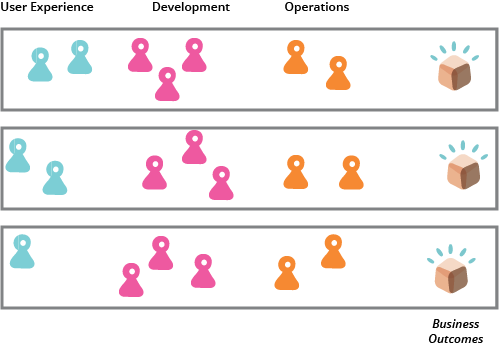Out come Oriented
effort, better sales conversion, greater customer satisfaction, i.e business outcomes. Outcome-oriented teams are those that are mandated and equipped to deliver business outcomes, such teams have people with the capability to carry out all necessary activities to realize the outcome.. By contrast, ActivityOriented teams are neither equipped nor mandated to do so. They can only perform one of several activities required to realize an outcome.

A mandate to deliver a business outcome is very different from a mandate to deliver a certain amount of scope. Scope delivery is easy, relatively speaking. Outcome realization requires real collaboration between those who understand the problem and those who can fashion various levels of solution for it. Initial attempts at solution lead to a better understanding of the problem which leads to further attempts at better solutions. This doesn’t work where the product management organization is separate from the development (scope-delivery) organization.
Outcome-oriented teams are necessarily cross-functional (multidisciplinary) whereas ActivityOriented teams are typically mono-functional (single specialty). In the most traditional scenario, an outcome might simply be defined in terms of a project. The project is funded on the basis of a business case and therefore the desired outcome is to realize what is promised in the business case. However, depending on the size of the project it may be organized as one or more teams. When these teams are set up along activity boundaries it becomes an activity-oriented project (or program) organization. On the other hand, we achieve an outcome-oriented organization by dividing the overall outcome into sub-outcomes and assigning sub-outcomes to cross-functional teams that are self-sufficient in terms of people required to deliver the sub-outcome.
Yorumlar
Yorum Gönder